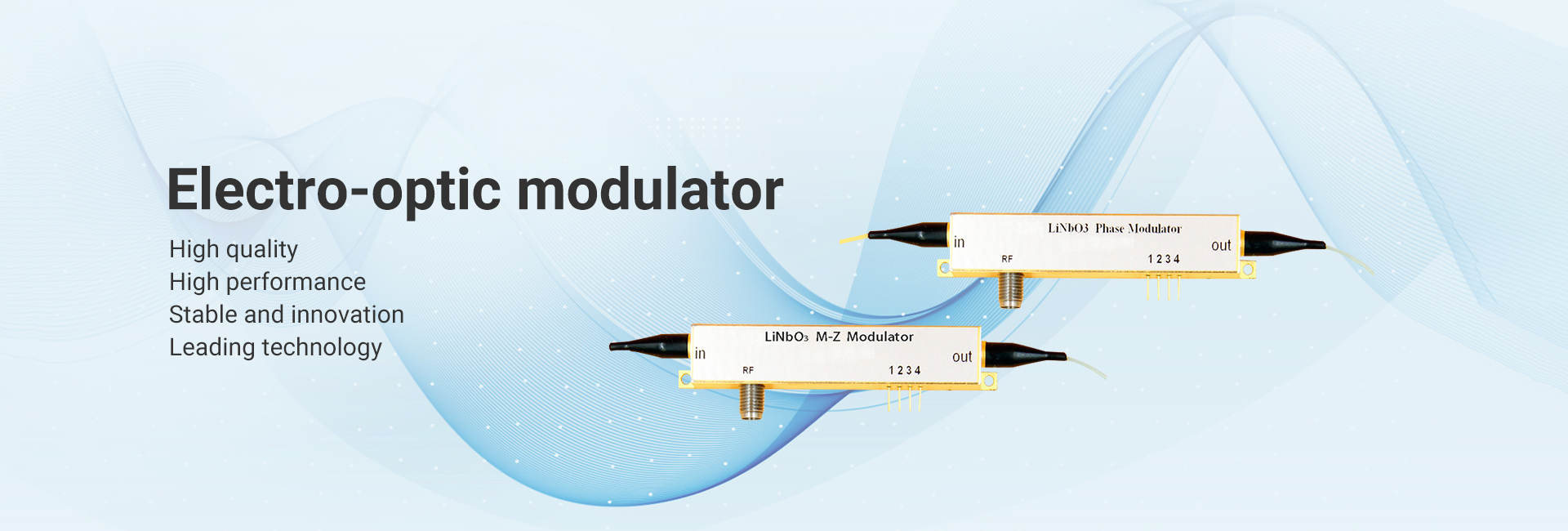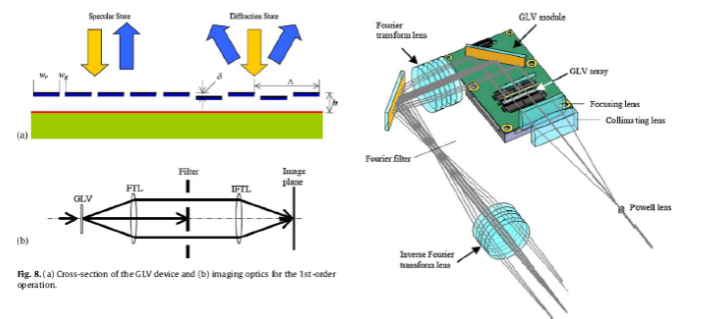Optical modulator, used to control the intensity of light, classification of electro-optic, thermooptic, acoustooptic, all optical, basic theory of electro-optic effect.
Optical modulator is one of the most important integrated optical devices in high-speed and short-range optical communication. Light modulator according to its modulation principle, can be divided into electro-optic, thermooptic, acoustooptic, all optical, etc., they are based on the basic theory is a variety of different forms of electro-optic effect, acoustooptic effect, magnetooptic effect, Franz-Keldysh effect, quantum well Stark effect, carrier dispersion effect.

The electro-optical modulator is a device that regulates the refractive index, absorptivity, amplitude or phase of the output light through the change of voltage or electric field. It is superior to other types of modulators in terms of loss, power consumption, speed and integration, and is also the most widely used modulator at present. In the process of optical transmission, transmission and reception, the optical modulator is used to control the intensity of light, and its role is very important.
The purpose of light modulation is to transform the desired signal or the transmitted information, including “eliminating background signal, eliminating noise, and anti-interference”, so as to make it easy to process, transmit and detect.
Modulation types can be divided into two broad categories depending on where the information is loaded onto the light wave:
One is the driving power of the light source modulated by the electric signal; The other is to modulate the broadcast directly.
The former is mainly used for optical communication, and the latter is mainly used for optical sensing. For short: internal modulation and external modulation.
According to the modulation method, the modulation type is:
2) Phase modulation;
3) Polarization modulation;
4) Frequency and wavelength modulation.
1.1, intensity modulation
Light intensity modulation is the intensity of light as the modulation object, the use of external factors to measure the DC or slow change of the light signal into a faster frequency change of the light signal, so that the AC frequency selection amplifier can be used to amplify, and then the amount to be measured out continuously.
1.2, phase modulation
The principle of using external factors to change the phase of light waves and measuring physical quantities by detecting phase changes is called optical phase modulation.
The phase of the light wave is determined by the physical length of the light propagation, the refractive index of the propagation medium and its distribution, that is to say, the change of the phase of the light wave can be generated by changing the above parameters to achieve phase modulation.
Because the light detector generally can not perceive the change of the phase of the light wave, we must use the interference technology of light to transform the phase change into the change of light intensity, in order to achieve the detection of external physical quantities, therefore, the optical phase modulation should include two parts: one is the physical mechanism of generating the phase change of the light wave; The second is the interference of light.
1.3. Polarization modulation
The simplest way to achieve light modulation is to rotate two polarizers relative to each other. According to Malus’ theorem, the output light intensity is I=I0cos2α
Where: I0 represents the light intensity passed by the two polarizers when the principal plane is consistent; Alpha represents the Angle between the two polarizers’ principal planes.
1.4 Frequency and wavelength modulation
The principle of using external factors to change the frequency or wavelength of light and measuring external physical quantities by detecting changes in the frequency or wavelength of light is called frequency and wavelength modulation of light.
Post time: Aug-01-2023






